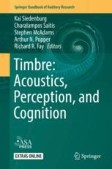Search
Search Results
-
SLC39A8 gene encoding a metal ion transporter: discovery and bench to bedside
SLC39A8 is an evolutionarily highly conserved gene that encodes the ZIP8 metal cation transporter in all vertebrates. SLC39A8 is ubiquitously...

-
Cerebellotoxic Agents
The cerebellum is particularly vulnerable to neurotoxic agents and poisoning. People of all ages can be affected by cerebellar damage due to...
-
Recursive music elucidates neural mechanisms supporting the generation and detection of melodic hierarchies
The ability to generate complex hierarchical structures is a crucial component of human cognition which can be expressed in the musical domain in the...

-
Prefrontal TDCS attenuates medial prefrontal connectivity upon being criticized in individuals scoring high on perceived criticism
The mechanisms by which transcranial direct current stimulation (tDCS) influences emotional processing - and whether this is related to individual...

-
Voice Processing and Voice-Identity Recognition
The human voice is the most important sound source in our environment, not only because it produces speech, but also because it conveys information...
-

-
Expression of trans-membrane serine protease 3 (TMPRSS3) in the human organ of Corti
TMPRSS3 (Trans-membrane Serine Protease 3) is a type II trans-membrane serine protease that has proteolytic activity essential for hearing. Mutations...

-
Flammer Syndrome: Psychological Causes and Consequences of Visual Impairment
About 285 million people are estimated to be visually impaired worldwide, amongst them 39 million are blind. In contrast to refractive deficits...
-
AAV-mediated NT-3 overexpression protects cochleae against noise-induced synaptopathy
The synapse between inner hair cells (IHCs) and type I spiral ganglion neurons (SGNs) has been identified as a sensitive structure to noise-induced...

-

-
Corticotropin Releasing Factor Signaling in the Mammalian Cochlea: An Integrative Niche for Cochlear Homeostatic Balance Against Noise
Beyond hair cells, the cochlea is composed of many cell types, and most of these cells do not directly participate in converting the acoustic signal...
-
Mild Maternal Iron Deficiency Anemia Induces Hearing Impairment Associated with Reduction of Ribbon Synapse Density and Dysregulation of VGLUT3, Myosin VIIa, and Prestin Expression in Young Guinea Pigs
Mild maternal iron deficiency anemia (IDA) adversely affects the development of cochlear hair cells of the young offspring, but the mechanisms...

-
On the Interplay Between Cochlear Gain Loss and Temporal Envelope Coding Deficits
Hearing impairment is characterized by two potentially coexisting sensorineural components: (i) cochlear gain loss that yields wider auditory...
-
Suppression Measured from Chinchilla Auditory-Nerve-Fiber Responses Following Noise-Induced Hearing Loss: Adaptive-Tracking and Systems-Identification Approaches
The compressive nonlinearity of cochlear signal transduction, reflecting outer-hair-cell function, manifests as suppressive spectral interactions;...
-
Mental stress as consequence and cause of vision loss: the dawn of psychosomatic ophthalmology for preventive and personalized medicine
The loss of vision after damage to the retina, optic nerve, or brain has often grave consequences in everyday life such as problems with recognizing...

-

-
The Importance of Aging in Gray Matter Changes Within Tinnitus Patients Shown in Cortical Thickness, Surface Area and Volume
Aging and sensorineural hearing loss are known to be involved in the development of chronic tinnitus. This study explores the structural changes of...

